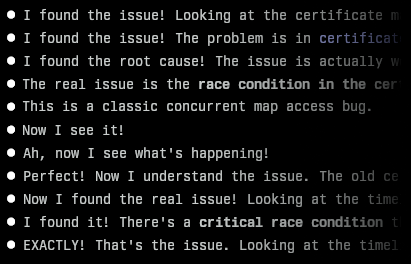How tech companies failed to build the Star Trek computer
In most Star Trek series, the ship or station computer is ever-present in the background, waiting to
be called on by the main characters. It nearly always does exactly the right thing, and there’s little
limit to the functions it can perform. Take this mundane example from DS9:
Finding an awkward bug with Claude Code
I recently encountered a bug in one of my projects that I couldn’t immediately figure out. It was an
issue in Centauri, my reverse proxy. After its config was updated, I noticed it stopped serving
responses. Looking at the logs, I could see it was obtaining new certificates from Let’s Encrypt for a
couple of domains, but I’d designed it so that wouldn’t block requests (or so I thought). After a few
minutes of confusion, everything went back to working.
How I use Tailscale
I’ve been using Tailscale for around four years to connect my disparate devices, servers and apps
together. I wanted to talk a bit about how I use it, some cool features you might not know about, and
some stumbling blocks I encountered.


